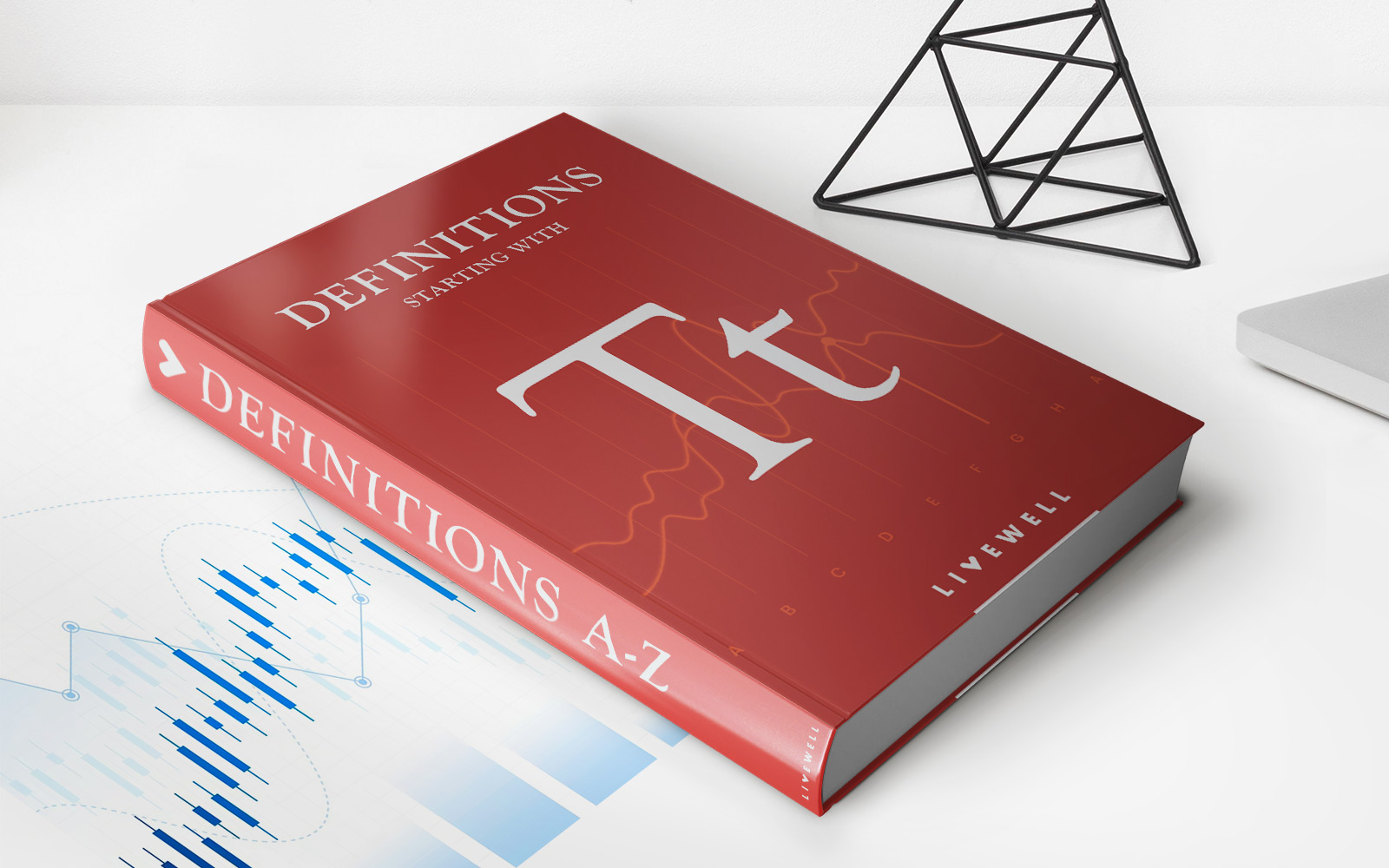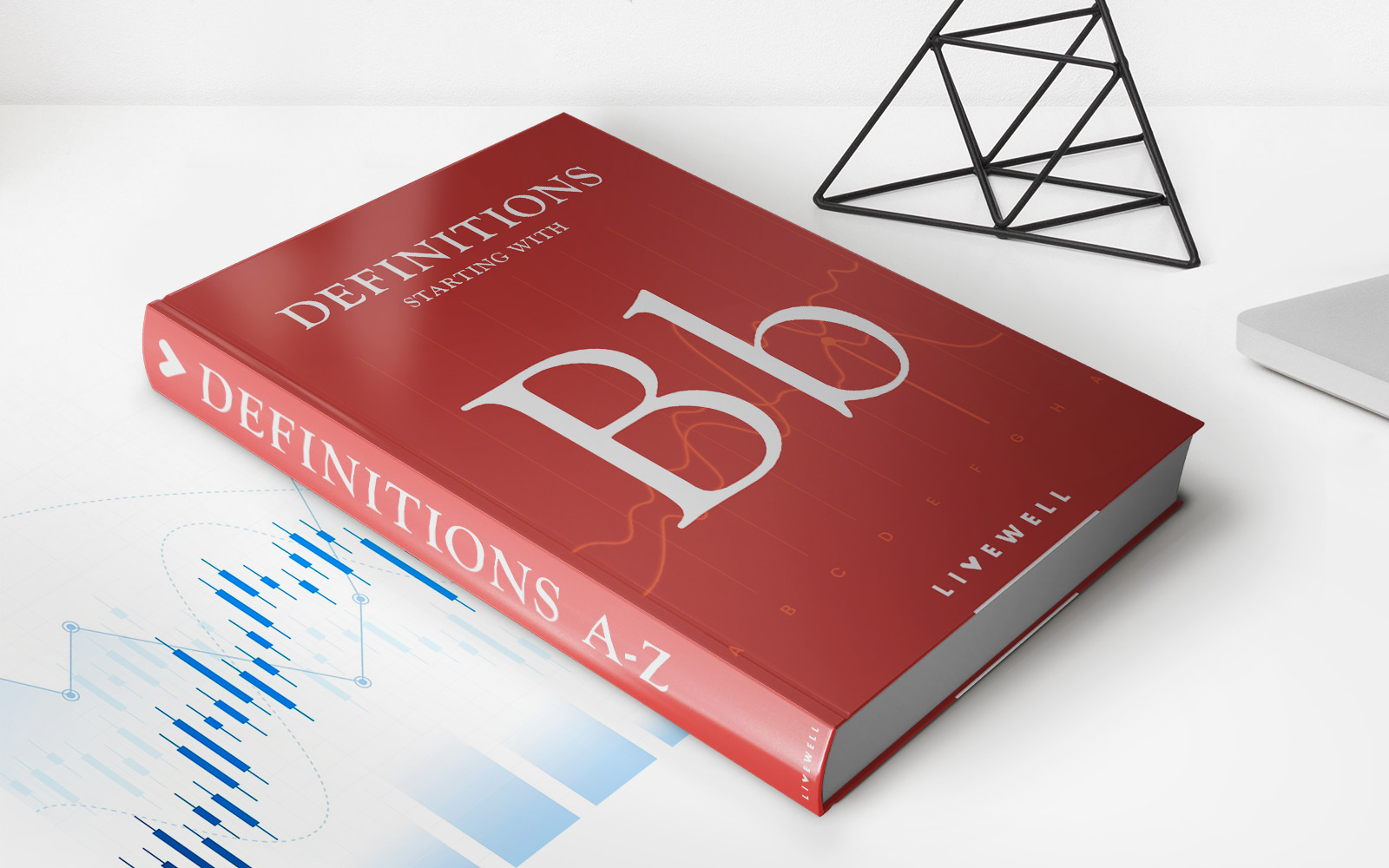

Finance
What Credit Score Do I Need For A $10 000 Loan
Modified: February 21, 2024
Looking for a $10,000 loan? Find out what credit score you need to secure financing. Get the financial assistance you need with our finance solutions.
(Many of the links in this article redirect to a specific reviewed product. Your purchase of these products through affiliate links helps to generate commission for LiveWell, at no extra cost. Learn more)
Table of Contents
Introduction
When it comes to borrowing money, having a good credit score is crucial. Lenders use credit scores to determine a borrower’s creditworthiness and eligibility for loans. If you’re considering taking out a $10,000 loan, it’s important to understand what credit score you’ll need to qualify.
Your credit score is a numerical representation of your creditworthiness, based on your past credit history, payment behavior, and debt management. A higher credit score indicates that you are a responsible borrower, which makes you more likely to be approved for loans with favorable terms and interest rates.
There are several factors that can affect your credit score, including your payment history, credit utilization, length of credit history, types of credit, and any recent credit inquiries. It’s important to be aware of these factors and take steps to maintain a good credit score.
In this article, we will explore the importance of credit score for loans, specifically focusing on $10,000 loans. We’ll discuss the different types of loans available and the credit score requirements typically associated with them. Additionally, we’ll provide valuable insights and tips on how to improve your credit score if it falls below the necessary threshold.
Understanding the relationship between credit score and loan eligibility is essential for anyone considering borrowing $10,000. So, let’s dive in and explore the credit score requirements for a $10,000 loan.
Factors Affecting Credit Score
Several key factors contribute to the calculation of your credit score. Understanding these factors can help you make informed decisions to improve and maintain a good credit score.
1. Payment History: Your payment history is the most influential factor in determining your credit score. Lenders want to see that you consistently make your payments on time. Any late payments, defaults, or delinquencies can have a negative impact on your credit score.
2. Credit Utilization: This refers to the percentage of your available credit that you are currently using. Keeping your credit utilization ratio low, ideally below 30%, shows lenders that you are responsible with credit and not maxing out your available limits.
3. Length of Credit History: The length of time you have had credit accounts is also important. A longer credit history demonstrates your ability to handle credit responsibly over time. Even if you are new to credit, it’s essential to start building a positive credit history as soon as possible.
4. Types of Credit: Diversifying your credit portfolio can positively impact your credit score. Having a mix of credit types, such as credit cards, loans, and mortgages, shows your ability to manage different types of credit responsibly.
5. Recent Credit Inquiries: Every time you apply for new credit, a hard inquiry is placed on your credit report. Too many inquiries within a short period can negatively impact your credit score. It’s essential to be selective and cautious when applying for new credit.
These factors collectively determine your credit score and play a significant role in your financial well-being. By understanding these factors, you can take proactive steps to improve your creditworthiness and increase your chances of qualifying for a $10,000 loan.
Understanding Credit Scores
A credit score is a three-digit number that represents your creditworthiness and helps lenders assess the risk of lending you money. The most widely used credit scoring model is the FICO score, developed by the Fair Isaac Corporation.
FICO scores range from 300 to 850, with higher scores indicating better creditworthiness. Here’s a breakdown of the credit score ranges:
- Poor: 300-579
- Fair: 580-669
- Good: 670-739
- Very Good: 740-799
- Excellent: 800-850
Lenders use your credit score as a quick assessment of your financial responsibility. A higher credit score demonstrates that you are more likely to repay your debts on time and in full.
It’s important to keep in mind that different lenders may have varying criteria for loan approval, and credit scores are just one aspect they consider. They may also take into account your income, employment history, and debt-to-income ratio when assessing your loan application.
Monitoring your credit score regularly can help you stay aware of your financial standing and identify areas for improvement. You can obtain a free copy of your credit report from each of the three major credit bureaus – Equifax, Experian, and TransUnion – once a year through AnnualCreditReport.com.
Understanding your credit score allows you to take steps to improve it if necessary before applying for a $10,000 loan. By maintaining good financial habits, such as making timely payments, keeping credit utilization low, and avoiding excessive debt, you can gradually improve your credit score over time.
Keep in mind that credit scores are not static and can change depending on your financial behavior. With responsible financial management, you can work towards achieving a higher credit score, which will not only improve your chances of qualifying for a $10,000 loan but also open doors for better loan terms and interest rates.
Importance of Credit Score for Loans
Having a good credit score is essential when it comes to borrowing money, especially for larger loan amounts like a $10,000 loan. Your credit score plays a vital role in the loan approval process and can significantly impact the terms and conditions of the loan.
1. Loan Eligibility: Lenders use credit scores to assess the risk of lending to potential borrowers. A higher credit score indicates a lower risk, making you more eligible for loans. Conversely, a low credit score may result in loan denials or higher interest rates.
2. Interest Rates: Your credit score directly influences the interest rates you qualify for. Borrowers with excellent credit scores are more likely to secure loans with lower interest rates, saving them money in the long run. On the other hand, borrowers with lower credit scores may face higher interest rates, increasing the cost of the loan over the repayment period.
3. Loan Terms: Lenders may offer more favorable loan terms, such as longer repayment periods or higher loan amounts, to borrowers with higher credit scores. This can provide flexibility and affordability, making it easier for you to manage your loan repayment.
4. Borrowing Limits: A good credit score may also increase the amount you can borrow. Lenders may be more willing to provide larger loan amounts to borrowers with strong credit histories, giving you access to the funds you need for various purposes.
5. Future Borrowing Opportunities: Your credit score affects not only your current loan application but also your future borrowing opportunities. Maintaining a good credit score opens doors to better loan options in the future, making it easier for you to achieve your financial goals.
It’s important to note that while a good credit score enhances your borrowing potential, it is not the only factor lenders consider. Other aspects, such as your income, employment status, and debt-to-income ratio, also come into play. However, having a solid credit score significantly strengthens your overall loan application.
By understanding the importance of credit score for loans, you can prioritize building and maintaining a good credit score. This includes making timely payments, keeping your credit utilization low, and regularly monitoring your credit report for any errors or discrepancies that may impact your score.
Remember, a higher credit score not only increases your chances of qualifying for a $10,000 loan but also opens doors to favorable loan terms and potentially saves you money in interest payments. It’s an investment in your financial future that can have far-reaching benefits.
Types of $10,000 Loans
When it comes to borrowing $10,000, there are several loan options available depending on your specific needs and circumstances. Understanding the different types of loans can help you choose the one that best suits your situation. Here are some common options:
- Personal Loans: Personal loans are one of the most flexible options for borrowing $10,000. They are unsecured loans, meaning you don’t need to provide collateral. Personal loans can be used for various purposes, such as debt consolidation, home improvements, or unexpected expenses. The interest rates and terms vary depending on your creditworthiness and the lender.
- Secured Loans: If you have collateral to offer, such as a car or property, you can consider applying for a secured loan. The collateral acts as security for the lender, which can result in lower interest rates compared to unsecured loans. However, keep in mind that if you default on the loan, the lender has the right to take possession of the collateral.
- Home Equity Loans: If you own a home, you may be eligible for a home equity loan or line of credit (HELOC). This type of loan allows you to borrow against the equity you have built in your home. Home equity loans often come with competitive interest rates and terms, making them an attractive option for large loans like $10,000.
- Credit Cards: Depending on your credit limit and available credit, you may be able to charge a $10,000 expense to your credit card. However, keep in mind that credit card interest rates tend to be higher than other loan options. If you’re unable to pay off the balance quickly, you may incur significant interest charges.
- Peer-to-Peer Loans: Peer-to-peer (P2P) lending platforms connect borrowers with individual lenders willing to fund their loans. P2P loans often offer competitive interest rates and more flexible terms compared to traditional lenders. However, your credit score will still play a role in your eligibility and loan terms.
- Payday Loans: Payday loans are short-term loans that typically require repayment within a few weeks, usually on your next payday. While they may be convenient for quick cash, payday loans often come with high interest rates and fees. It’s important to carefully consider the terms and your ability to repay the loan before taking this option.
Before deciding on a specific type of loan, it’s important to evaluate your financial situation, repayment capabilities, and the terms and conditions offered by different lenders. Compare interest rates, fees, and repayment options to choose the loan that best aligns with your needs and financial goals.
Credit Score Requirements for a $10,000 Loan
The credit score requirements for a $10,000 loan can vary depending on the lender and the type of loan you are applying for. Generally, lenders prefer borrowers with good to excellent credit scores for larger loan amounts. However, it is still possible to obtain a $10,000 loan with a lower credit score, although the terms and interest rates may be less favorable.
For personal loans and unsecured loans, lenders typically look for borrowers with credit scores in the range of 650 and above. A credit score in this range indicates good creditworthiness and a lower risk for the lender. With a score in this range, you are more likely to qualify for a $10,000 loan with reasonable interest rates and favorable terms.
If your credit score falls below 650, it does not necessarily mean you won’t be able to get a $10,000 loan. However, you may face more scrutiny from lenders and may be offered higher interest rates. In some cases, you might need to provide collateral or a co-signer to secure the loan.
It’s important to note that credit score requirements can vary among lenders and loan types. For example, secured loans such as home equity loans may be more flexible, and you may have a better chance of approval even with a lower credit score. On the other hand, payday loans or alternative lenders may have more lenient credit score requirements, but their interest rates and fees can be significantly higher.
Regardless of your credit score, it’s always a good idea to shop around and compare loan offers from different lenders. Online marketplaces and loan comparison websites can help you find lenders who specialize in working with borrowers with various credit profiles.
If your credit score is not where you would like it to be, there are steps you can take to improve it. Start by making timely payments on all your debts, keeping your credit utilization low, and avoiding new credit inquiries unless necessary. Gradually, these positive financial behaviors can help raise your credit score over time, making it easier to qualify for a $10,000 loan with better terms and rates.
Ultimately, credit score requirements are just one aspect that lenders consider when evaluating loan applications. Other factors, such as your income, employment history, and debt-to-income ratio, also play a role. By presenting a strong overall financial profile, you can increase your chances of obtaining a $10,000 loan, even if your credit score is not perfect.
Improving Your Credit Score
If your credit score is lower than desired and you’re looking to improve it before applying for a $10,000 loan, there are several steps you can take to boost your creditworthiness. Improving your credit score not only increases your chances of loan approval but also allows you to secure more favorable loan terms. Here are some strategies to help you improve your credit score:
- Make Timely Payments: Payment history is the most significant factor affecting your credit score. Make sure to pay all your bills and debts on time, including credit cards, loans, and utility bills. Consistent on-time payments show lenders that you are responsible and trustworthy.
- Reduce Credit Utilization: Aim to keep your credit card balances low and avoid maxing out your credit limits. High credit utilization ratios can negatively impact your credit score. Strive to keep your credit utilization below 30% of your available credit.
- Manage Debt Levels: Carefully manage your overall debt levels. Pay down existing debts and avoid taking on new debts unless necessary. Lenders prefer borrowers with a lower debt-to-income ratio, which demonstrates better financial stability.
- Monitor Your Credit Report: Regularly review your credit report to ensure its accuracy. Look for any errors, such as incorrect account information or late payment records. Dispute any inaccuracies promptly to protect your credit score.
- Diversify Your Credit Mix: Having a mix of credit types, such as credit cards, loans, and a mortgage, can positively impact your credit score. However, only apply for new credit when needed and avoid excessive credit inquiries.
- Keep Old Accounts Open: Closing old credit accounts may appear to be a good idea, but it can actually harm your credit score. Keeping old accounts open shows a longer credit history, which can boost your score. However, be sure to use them responsibly and make occasional small purchases to keep them active.
- Seek Professional Help if Needed: If you’re struggling to improve your credit score on your own, consider seeking assistance from a reputable credit counseling agency. They can provide guidance on managing your debts, developing a repayment plan, and improving your overall creditworthiness.
Improving your credit score takes time and discipline, but the effort is worthwhile. By implementing these strategies, you can gradually raise your credit score and enhance your financial standing, making it easier to qualify for a $10,000 loan with better terms and more favorable interest rates.
Remember, building good credit habits and maintaining a positive credit history are long-term commitments that can benefit you in various financial endeavors. Take control of your credit score, and you’ll be on your way to a stronger financial future.
Alternatives for Bad Credit Scores
If you have a bad credit score and are unable to qualify for a $10,000 loan with traditional lenders, there are still alternative options available. While these options may come with higher interest rates or stricter terms, they can provide you with the funding you need. Here are some alternatives to consider:
- Secured Loans: Secured loans require collateral to secure the loan. If you have valuable assets such as a car, a savings account, or property that you can offer as collateral, you may be able to secure a loan even with bad credit. Keep in mind that if you fail to repay the loan, the lender has the right to repossess your collateral.
- Co-Signer: Another option is to find a co-signer with good credit who is willing to take joint responsibility for the loan. The co-signer’s good credit score can help offset your bad credit, increasing your chances of approval. However, it’s essential to understand that if you default on the loan, the co-signer is equally responsible for repayment.
- Online Lenders: Online lenders and peer-to-peer lending platforms may be more lenient with credit score requirements compared to traditional banks. These lenders often consider other factors, such as income and employment history, in addition to your credit score. However, be cautious of high interest rates and read the terms and conditions carefully before accepting any offers.
- Credit Unions: Credit unions are non-profit financial institutions that often offer more personalized lending options to their members. They may be more willing to work with individuals with lower credit scores and offer favorable loan terms. Joining a credit union and establishing a banking relationship can provide access to better loan options in the future.
- Online Peer-to-Peer Lending: Peer-to-peer lending platforms connect individual lenders with borrowers. These platforms may have options specifically tailored for individuals with bad credit. While interest rates may be higher, it’s still worth exploring as an alternative to traditional loans.
- Credit Builder Loans: Some financial institutions offer credit builder loans designed to help individuals with bad credit rebuild their credit history. With these loans, you borrow a smaller amount, usually deposited into a savings account, and make monthly payments. As you make timely payments, the lender reports this positive behavior to the credit bureaus, boosting your credit score over time.
While these alternatives may provide access to funds despite bad credit, it’s essential to carefully review the terms and conditions, including interest rates, fees, and repayment terms. Assess your financial situation and repayment capability before taking on any type of loan. Additionally, consider improving your credit score over time to qualify for better loan options in the future.
Remember, rebuilding your credit takes time and patience. By making timely payments, managing your debts responsibly, and demonstrating positive financial habits, you can gradually improve your creditworthiness and access more favorable loan options.
Conclusion
Obtaining a $10,000 loan requires careful consideration of your credit score and understanding its significance in the loan approval process. While it’s ideal to have a good to excellent credit score to secure the best loan terms and interest rates, there are still options available for individuals with lower credit scores.
Factors such as payment history, credit utilization, length of credit history, types of credit, and recent credit inquiries all play a role in determining your credit score. By actively managing these factors and improving your creditworthiness, you can increase your chances of qualifying for a $10,000 loan with more favorable terms.
There are various types of loans to consider, including personal loans, secured loans, home equity loans, credit cards, and peer-to-peer loans. Each option has its own requirements and considerations. It’s important to evaluate your financial situation, repayment capabilities, and the terms offered by different lenders to make an informed decision.
If your credit score falls below the desired range, there are steps you can take to improve it. Making timely payments, reducing credit utilization, managing debt levels, and monitoring your credit report are all crucial in maintaining and enhancing your creditworthiness.
If you find yourself with a bad credit score, don’t despair. There are alternatives available, including secured loans, co-signers, online lenders, credit unions, online peer-to-peer lending, and credit builder loans. Although these options may come with higher interest rates or stricter terms, they can provide the funds you need while also helping you rebuild your credit over time.
In conclusion, understanding the credit score requirements for a $10,000 loan is essential. By actively working to improve your credit score, exploring different loan options, and considering alternative lenders, you can increase your chances of securing a $10,000 loan that meets your financial needs. Remember, building and maintaining a good credit score is a long-term commitment that can open doors to better financial opportunities in the future.














